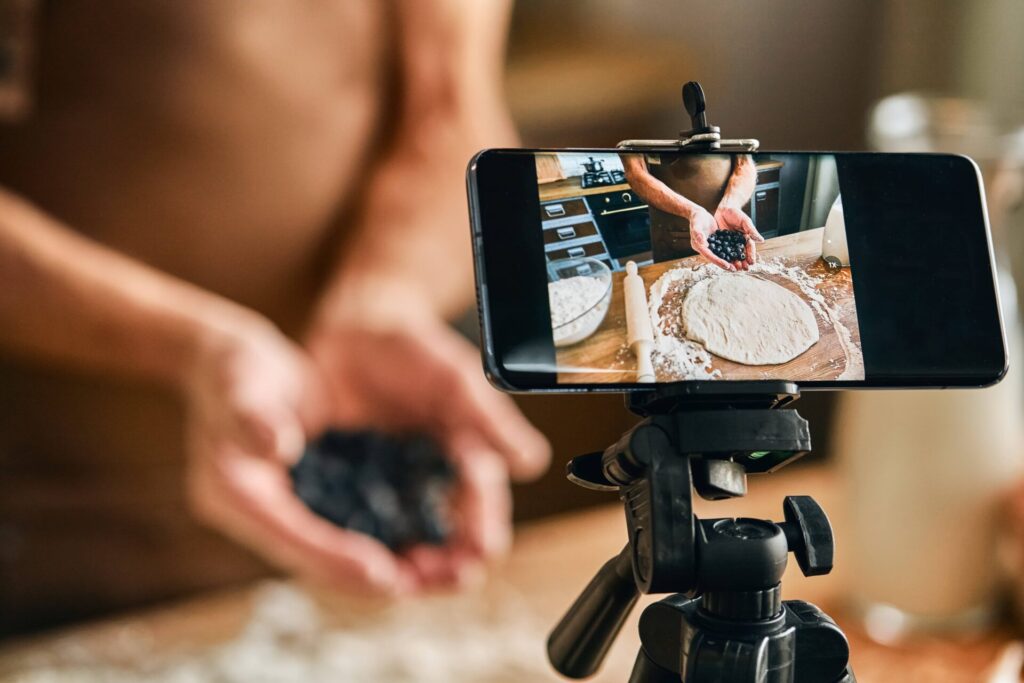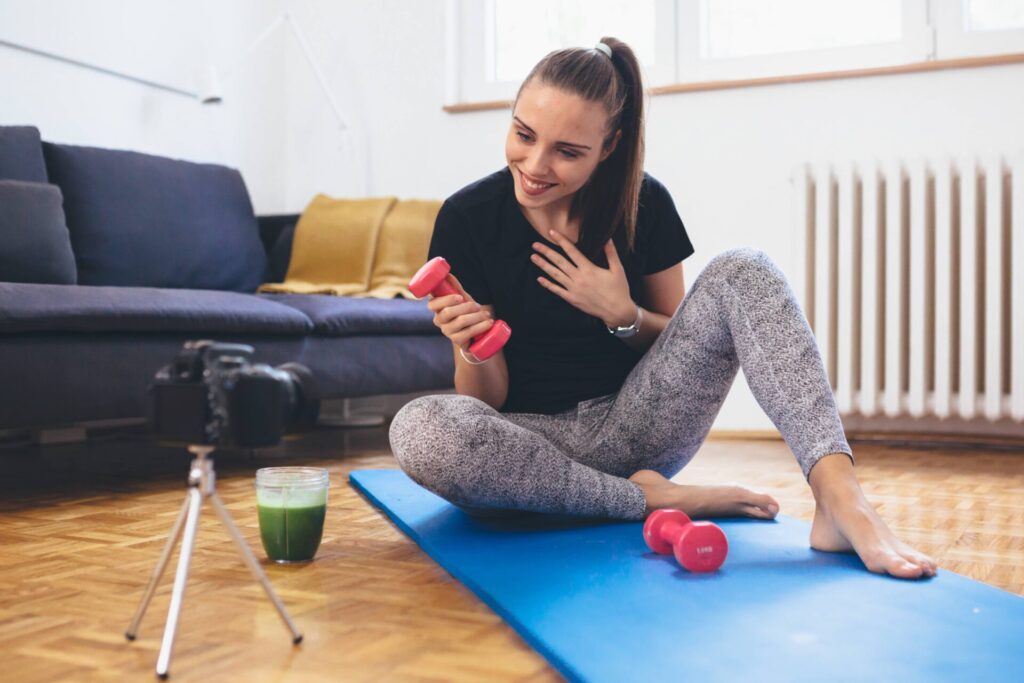Vlogging, or video blogging, has become increasingly popular in recent years as a way to share your experiences, opinions, and creativity with a global audience. Whether you’re an aspiring influencer, creative artist, or just someone who enjoys sharing your thoughts and experiences, vlogging can be a fun and rewarding way to connect with others.
A. What is a Vlog?
A vlog is a type of video blog that typically features the creator speaking directly to the camera, sharing their thoughts, opinions, experiences, or showcasing their talents. Vlogs can cover a wide range of topics, from travel and lifestyle to beauty and fashion, food, and more. With the rise of social media and video-sharing platforms such as YouTube, vlogging has become a popular way to connect with like-minded individuals and build an online community.
B. Benefits of Starting a Vlog
There are many benefits to starting a vlog, including the following:
- Building a personal brand and online presence
- Sharing your passions and interests with a wider audience
- Creating engaging and entertaining content
- Building a community and connecting with like-minded individuals
- Potentially earning income through sponsorships, advertising, and other collaborations
Whether you’re looking to build a personal brand or just want to share your experiences with others, starting a vlog can be a fun and rewarding way to connect with a global audience. In the next section, we’ll look at how to plan your vlog effectively.
Planning Your Vlog
Before you start filming, it’s essential to plan your vlog effectively. Here are some tips for planning your vlog:
A. Identify Your Niche and Target Audience
The first step to planning your vlog is to identify your niche and target audience. This involves determining what topics you want to cover in your vlog and who your target audience is. Consider your interests, passions, and expertise, and think about what type of content you want to create.
It’s essential to choose a niche that you’re passionate about, and that has a dedicated audience. By focusing on a specific niche, you can establish yourself as an authority and build a loyal following.
B. Develop a Content Strategy and Plan Your Topics
Once you’ve identified your niche and target audience, the next step is to develop a content strategy and plan your topics. Consider the types of content you want to create, such as tutorials, reviews, or vlogs. Brainstorm ideas for topics and create a content calendar to help you stay organized.
When planning your content, consider what your audience wants to see and what value you can provide. Try to create content that is engaging, informative, and entertaining. It’s also important to be consistent with your content and publish on a regular schedule.
C. Create a Production Schedule
Creating a production schedule is essential to ensure that you’re able to consistently produce high-quality content. Consider the amount of time you need to film, edit, and upload your videos, and create a schedule that works for you.
When creating your production schedule, be realistic about how much time and effort you can dedicate to your vlog. It’s better to start with a simple schedule and gradually increase your output than to burn out from trying to create too much content too quickly.
In the next section, we’ll look at choosing the right equipment for your vlog.
How to Start a Vlog: A Step-by-Step Guide

Choosing Your Equipment
Choosing the right equipment is crucial to ensure that your vlog looks and sounds professional. Here are some options to consider:
A. Camera Options
When it comes to cameras, there are many options to choose from, including smartphones, point-and-shoot cameras, and DSLRs. The type of camera you choose will depend on your budget and the level of quality you want to achieve.
Smartphones are a popular option for vloggers on a budget, as they often have good-quality cameras and are easy to use. Point-and-shoot cameras are also a great option for vloggers who want better quality than a smartphone but don’t want to invest in a more expensive DSLR.
DSLRs are the most expensive option but offer the highest quality and the most versatility. They allow you to change lenses, adjust focus and exposure, and shoot in a range of lighting conditions.
B. Microphone Options
The audio quality of your vlog is just as important as the video quality. If your viewers can’t hear you properly, they may lose interest in your content. There are several microphone options to consider, including:
- On-camera microphones: These attach directly to your camera and are a good option for vloggers who don’t want to carry a separate microphone.
- Lavalier microphones: These are small, clip-on microphones that attach to your clothing and are a great option for vloggers who move around a lot.
- Shotgun microphones: These are directional microphones that capture audio from a specific direction and are a good option for vloggers who film in noisy or windy environments.
C. Lighting Options
Good lighting is essential to ensure that your vlog looks professional. There are several lighting options to consider, including natural light, artificial light, and ring lights.
Natural light is the most cost-effective option and can provide beautiful results if used correctly. Artificial light can also be used, such as desk lamps or studio lights, but it can be more expensive. Ring lights are a popular option for vloggers as they provide even lighting and are easy to set up.
In the next section, we’ll look at how to shoot your vlog and capture quality footage.
Shooting Your Vlog
Once you’ve chosen your equipment, it’s time to start filming your vlog. Here are some tips for shooting your vlog:
A. Setting up Your Equipment and Filming Environment
Before you start filming, it’s essential to set up your equipment and filming environment. Make sure that your camera and microphone are positioned correctly and that your lighting is even and flattering.
Consider your background and make sure that it’s visually interesting but not distracting. If you’re filming in a noisy environment, consider using a directional microphone or filming in a quiet location.
B. Tips for Capturing Quality Footage and Audio
To capture high-quality footage and audio, consider the following tips:
- Use a tripod or stabilizer to keep your camera steady and avoid shaky footage.
- Use manual focus and exposure settings to ensure that your footage is well-lit and in focus.
- Test your microphone before filming to ensure that it’s working correctly.
- Consider using an external microphone for better audio quality.
- Avoid recording in windy or noisy environments.
C. Best Practices for Being on Camera
Being on camera can be nerve-wracking, especially if you’re not used to it. Here are some tips for being on camera:
- Speak clearly and at a natural pace.
- Use gestures and facial expressions to engage with your audience.
- Maintain eye contact with the camera.
- Be yourself and have fun!
In the next section, we’ll look at how to edit your vlog and create engaging content.
Editing Your Vlog
Editing is an essential part of creating a successful vlog. Here are some tips for editing your vlog:
A. Choosing the Right Editing Software
There are many editing software options to choose from, ranging from free software such as iMovie and Windows Movie Maker to more advanced software like Adobe Premiere Pro and Final Cut Pro.
When choosing your editing software, consider your budget, level of experience, and the features you need to create the type of content you want.
B. Editing Techniques and Tips for Creating Engaging Content
When editing your vlog, consider the following techniques and tips:
- Start with a strong opening to grab your viewers’ attention.
- Cut out any unnecessary footage or awkward pauses.
- Use jump cuts and B-roll footage to add interest and variety.
- Keep your pacing consistent, and avoid making your vlog too long.
- Use text overlays and captions to emphasize key points or add humor.
- Add transitions between scenes to create a seamless flow.
C. Adding Music, Sound Effects, and Graphics
Adding music, sound effects, and graphics can take your vlog to the next level. Here are some tips for using these elements effectively:
- Use music to set the tone and mood of your vlog.
- Choose sound effects that enhance the action or emotion in your footage.
- Use graphics such as lower thirds or title cards to provide context or add humor.
When using music, sound effects, or graphics, make sure that they’re not overpowering your voice or distracting from your message.
Publishing Your Vlog

Once you’ve created your vlog, it’s time to share it with the world. Here are some tips for publishing and promoting your vlog:
A. Uploading and Optimizing Your Videos on YouTube or Other Platforms
YouTube is the most popular platform for vloggers, but there are other options, such as Vimeo and Dailymotion. When uploading your videos, make sure to optimize them for search by:
- Choosing a keyword-rich title that accurately describes your content.
- Writing a compelling description that includes keywords and provides context for your video.
- Adding relevant tags to help viewers find your video.
- Creating an eye-catching thumbnail that accurately represents your video.
B. Promoting Your Content on Social Media and Other Channels
To build an audience for your vlog, it’s important to promote your content on social media and other channels. Consider creating a Facebook page or Instagram account for your vlog and using hashtags to reach new viewers.
Engage with your audience by responding to comments and messages and asking for feedback. Collaborate with other vloggers or brands to expand your reach and build your audience.
C. Consistency and Engaging with Your Audience
Consistency is key when it comes to vlogging. Create a production schedule and stick to it to ensure that your audience knows when to expect new content. Engage with your audience by responding to comments, hosting Q&A sessions, and encouraging them to share your content with their friends and followers.
Remember that building an audience takes time and effort. Don’t get discouraged if you don’t see immediate results. Keep creating high-quality content and engaging with your audience, and you’ll eventually build a loyal following.
In the next section, we’ll summarize the main points and offer final tips and advice for starting a vlog.
Conclusion
Starting a vlog can be a fun and rewarding way to connect with a global audience and share your experiences, opinions, and creativity. To summarize, here are the main points to keep in mind:
- Identify your niche and target audience, and develop a content strategy and production schedule.
- Choose the right equipment, including a camera, microphone, and lighting.
- Shoot your vlog with attention to your equipment, the environment, and your performance.
- Edit your vlog to create engaging content with the help of editing software and elements such as music, sound effects, and graphics.
- Publish and promote your vlog on platforms such as YouTube and social media, and engage with your audience.
Remember, building an audience takes time and effort. Be consistent, and focus on creating high-quality content that is engaging, informative, and entertaining. Collaborate with other vloggers or brands to expand your reach, and never be afraid to ask for feedback.
Starting a vlog can be an exciting journey, and we encourage you to take the first step today. Good luck, and have fun!
